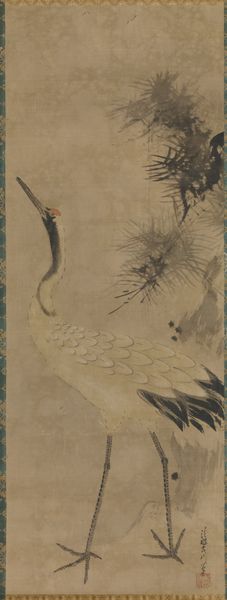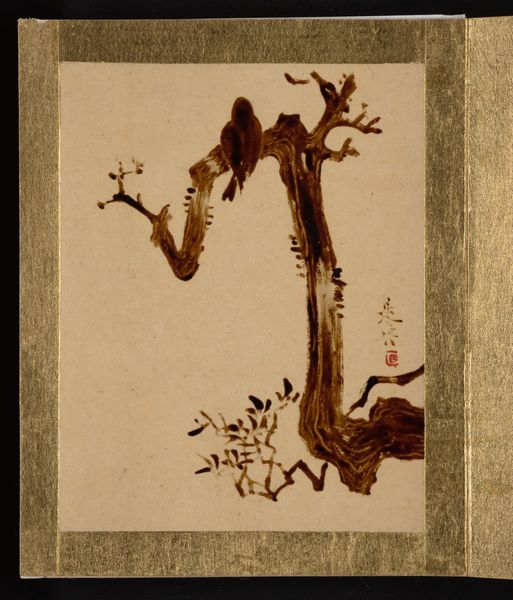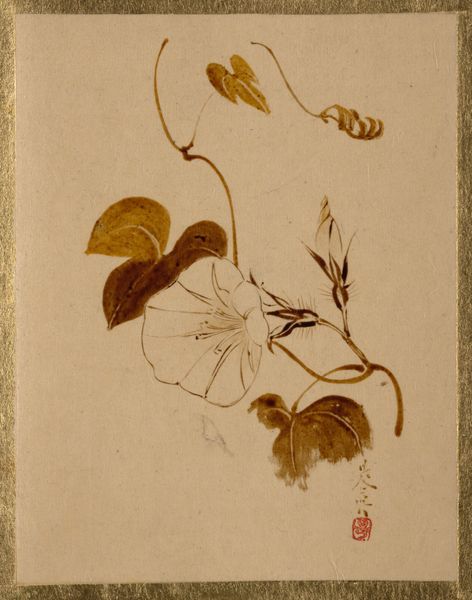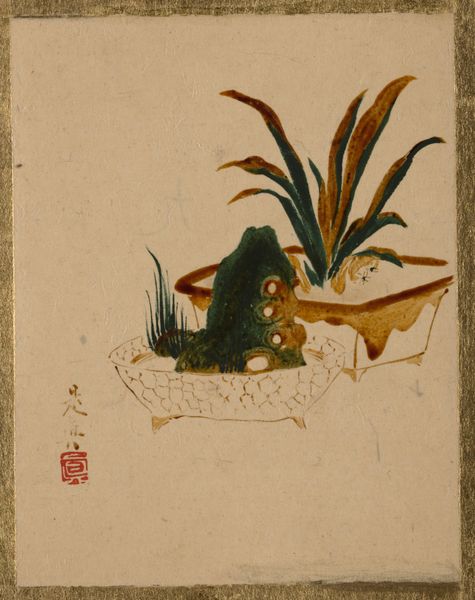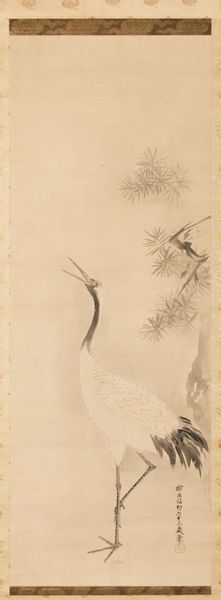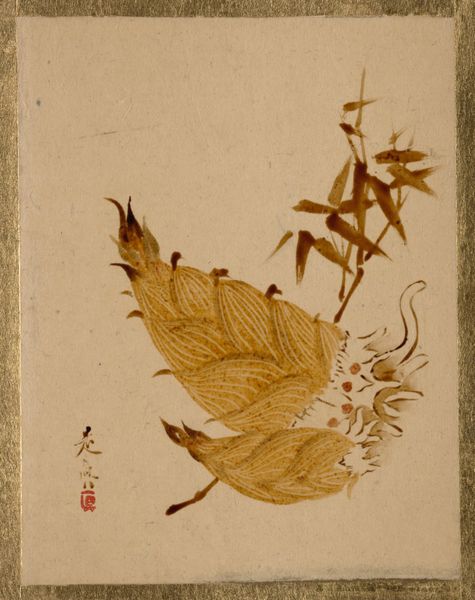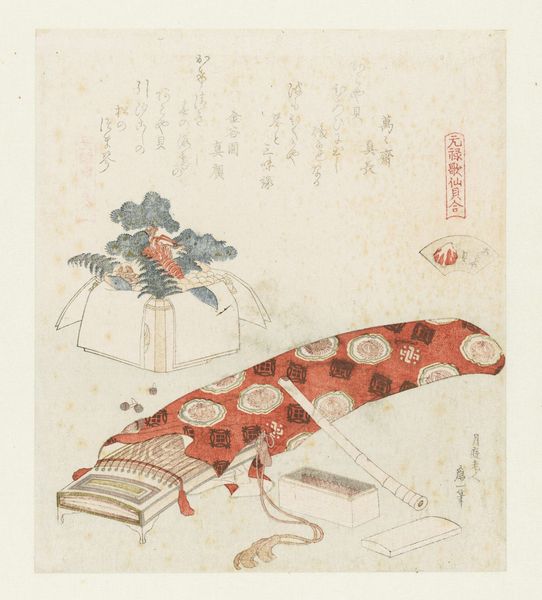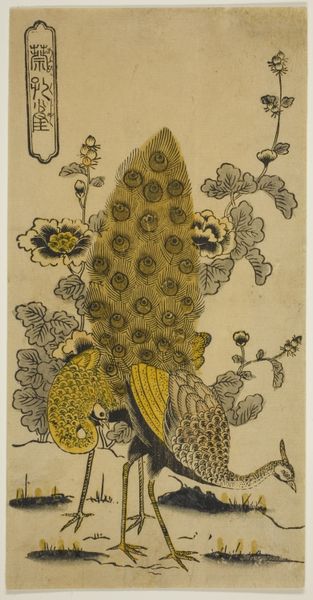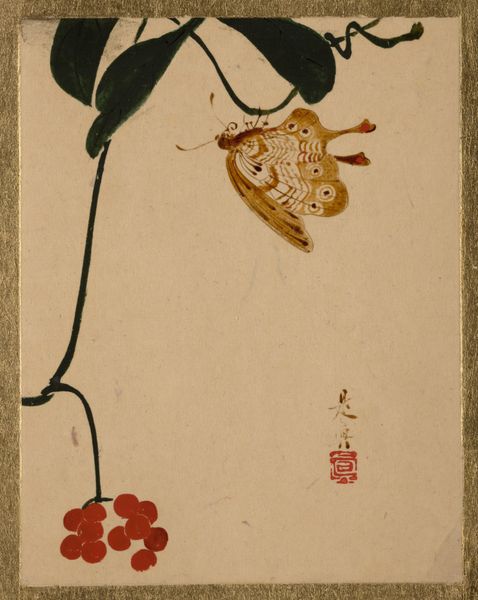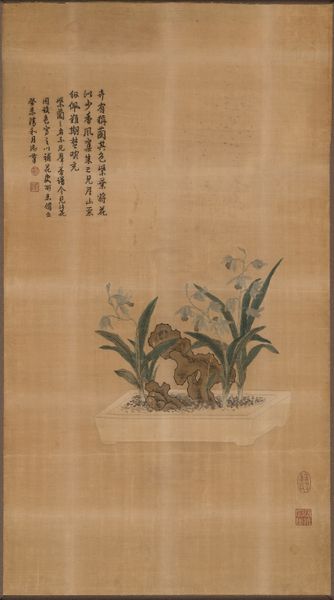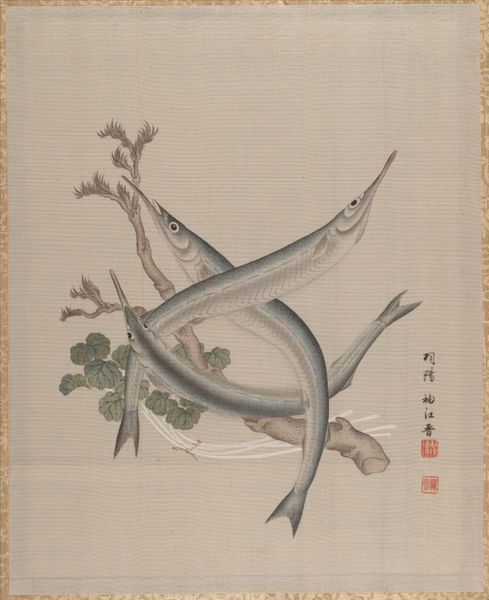
painting, watercolor
#
water colours
#
painting
#
asian-art
#
landscape
#
ukiyo-e
#
watercolor
Dimensions: 4 1/2 x 3 1/2 in. (11.4 x 8.9 cm)
Copyright: Public Domain
Curator: We have here "Seaweed" painted between 1807 and 1868 by Shibata Zeshin, rendered with watercolor. The organic forms presented against a stark background feel quite serene. What strikes you most about this piece? Editor: The way the different materials of the seaweed are presented, using those watercolor techniques, seems almost tactile. How might the production and the materiality speak to broader cultural or societal ideas of the time? Curator: Zeshin's embrace of urushi lacquer techniques within the traditional Ukiyo-e painting format disrupts the art-craft binary, especially since he's known for lacquerware design. Think about the social implications: what was the perceived hierarchy between a 'painter' and a 'craftsman'? Editor: It’s fascinating to think about the class associations there. Did using these "lower" materials influence how his work was received by high society patrons versus the merchant classes that favored Ukiyo-e? Curator: Precisely. And consider the seaweed itself – a common, readily available resource. Was Zeshin commenting on the accessibility of beauty, and rejecting the preciousness often associated with fine art? Or was there some interest and value in depicting an export good in Japan at the time? Editor: I never would've considered the seaweed as a resource, much less an export good. I'm realizing it isn't just a landscape; it also embodies societal values surrounding production. Thanks, this changed how I viewed it completely. Curator: Exactly! It is through attention to process, materials, and context that we can expand our understanding and appreciate how social structures influence both the artist and the art itself.
Comments
No comments
Be the first to comment and join the conversation on the ultimate creative platform.
